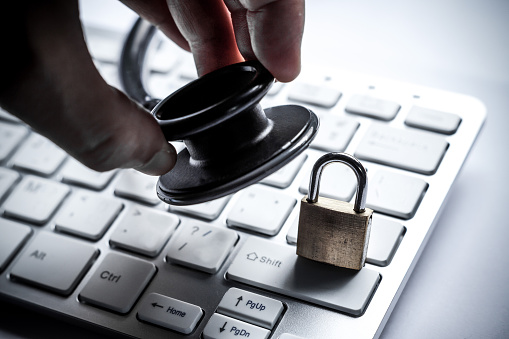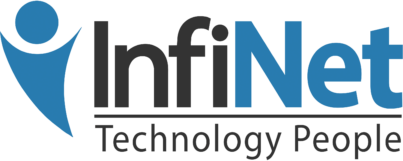Cybersecurity is a key topic for our healthcare tech professionals, especially as the cost of data breaches continues to rise. As I tell all of my clients, only a layered approach to security will provide a framework for complete protection.

Did you know that millions of records of data are impacted by data breaches every year? — And few industries are impacted as much as healthcare.
The sheer volume of personally identifiable healthcare information makes healthcare organizations like yours a prime target for cybercriminals—Especially since the going price for these details is $50 per record!
HHS has identified more than 200 data breaches so far in 2017, with each representing the PHI of a minimum of 500 individuals. Every breach requires notification of the individuals affected. The costs of remediation are taxing the resources of overworked healthcare professionals throughout the country.
Is Your Data Vulnerable?
As you know, your caregivers need access to patient data to do their jobs. However, even the most rigorously-trained may forget and leave their computer unmanned for a few moments, potentially exposing PHI to dishonest individuals.
Your nurses, doctors, and administrators need quick access to the most detailed and personal information in order to provide the highest possible quality of care—And if this access is provided on an unsecured workstation or on personal devices such as mobile phones or tablets, the information can easily be laid bare for all to see. The result? You’ll pay the price.
Digital Records and Devices Are Essential But Pose a Risk to Your Organization.
EMRs and EHRs provide portability to an individual’s healthcare that your doctors and providers can track information over time. They’ve proven to be much more efficient than using the traditional paper records of the past.
A person’s EHR contains a great many details that can easily be passed between different medical practices, hospitals or other healthcare providers—And, as helpful as this is, information can be lost or exposed if connections lack the proper security.
Lost laptops and mobile phones are also a critical concern as someone could quickly grab a device that’s been left out for only a moment. If you allow your staff to BYOD (Bring Your Own Device) you face an additional hurdle as individual phones or tablets accessing your intranet or medical records may be easier to hack than computer devices in your facility.
A Data Breach It Can Have a Far-Reaching Impact on Your Patients.
If you experience a data breach and immediately notify those affected, they can usually protect their personal accounts. However, if the notification isn’t received or acted upon, they may find themselves spending weeks, months and even years trying to untangle the web of fraudulent credit accounts and charges.
Identity theft causes an average of $2,500 in out-of-pocket costs to each person whose data has been misappropriated—a staggering sum that most American families would find difficult to recover from. This is especially distressing as fewer than one-third of the individuals a healthcare organization attempts to notify, receives the intended notification.
A Data Breach = Lost Business and Legal Fees
Studies show that more than 90 percent of individuals whose data is exposed due to a data breach move to a different healthcare provider—while others file lawsuits, change insurance providers and take actions against the organization that was the target of the cyberattack.
Unfortunately, consumers don’t typically report the data breach to the organization where the breach occurred—which can make it even more problematic for smaller healthcare providers to determine the cause of the breach, or even discover that an attack has happened.
Healthcare providers are trusted with a great deal of information. This can cause a strong negative reaction from those they serve when they find that the details of their personal health and life have been obtained by cybercriminals. The best way to maintain positive relations with your patients is by implementing stringent security protocols to ensure data integrity and preservation.
So, What’s the Lesson Learned?
Attacks will continue to grow in sophistication as your information systems grow in complexity, resulting in a perfect nexus of data that are ripe for attack. To avoid paying the price of a data breach, you must implement a sound basis for your IT operations that only a layered approach to security can provide. Contact us and we’ll be happy to explain what this is.
InfiNet Solutions
(402) 895-5777
[email protected]
